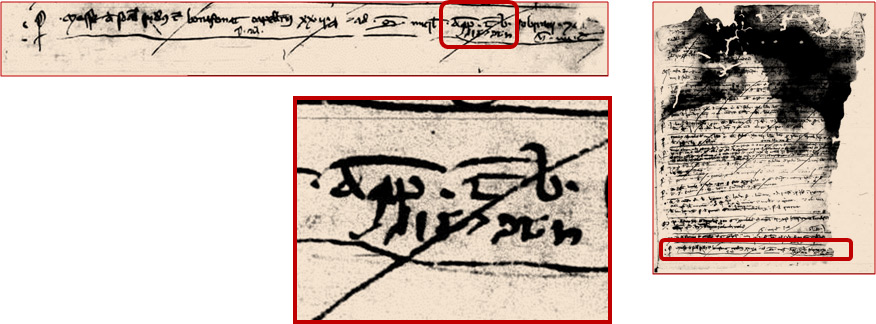During the thirteenth century in the Latin Mediterranean, notaries were required to register all of the documents they drafted for their clients in a protocol that they kept for future reference. Currently in France, the medieval town of Perpignan was under the political control of the rulers of the Crown of Aragon (Aragon, Catalonia, Valencia, the Balearics, Montpellier et al.). The thirteenth-century Crown of Aragon housed many prosperous and intellectually vibrant Jewish communities. The major Jewish urban center of Perpignan produced the highly original thinker Menahem ha-Meiri (who appears in Latin in the protocols of the 1270s on as Vidal Salamó Meir).
This image focuses on one of a series of radically abbreviated transactions in Latin: a loan that Bonafonat "Capellanus," or "the chaplain," made on 24 August 1261 to the Jew Mosse de Soal of twenty-two diners (pennies) to be repaid on the feast of the Archangel Michael, or Michaelmas, 29 September. This was a small loan made for a short time, only a month. Perhaps it concerned payment for Capellanus's services as a Latin scribe; it is not possible to be certain. The 1261 protocol is one of only two registers with Hebrew notations; brief annotations appear after eight Latin transactions in 1261 and an additional two in a 1266 register.
The bottom right of this loan displays Mosse de Soal's name in Hebrew: משה ד שואל. His Christian creditor may have asked Mosse to sign to support the transaction. Jews who lent money had been ordered by the king to take public oaths registered with their local notaries since 1241 at the latest. From the 1270s Hebrew notations are not found within the Latin registers. This 1261 register can thus possibly be read as transitional; a stage in the increasing familiarity and reliance of Jews on local Latin notarial culture. Local Jews regularly drafted Hebrew shetarot throughout the thirteenth century and well beyond. They also made transactions in Latin, not only debts and loans with Christians, but many other types of Jewish/ Christian transactions alongside various Latin agreements between Jews including those supporting Hebrew marriage contracts and death-bed inheritance declarations.
